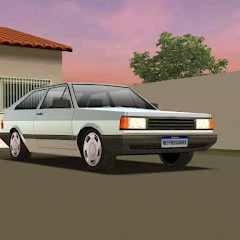How to Get Started with Tuning Goleta 3D?
- 1. **Understand the Basics**: Familiarize yourself with the Goleta 3D game engine, including its architecture, rendering techniques, and scripting language.
- 2. **Set Up Your Environment**: Install the necessary software tools, including Goleta 3D engine, a suitable IDE, and version control systems.
- 3. **Explore Documentation**: Read through the official Goleta 3D documentation and tutorials to understand the features and capabilities of the engine.
- 4. **Start with Simple Projects**: Create small test projects to practice basic functionalities such as loading models, creating textures, and implementing simple scripts.
- 5. **Learn About Game Assets**: Study how to create and optimize 3D models, textures, and animations to ensure compatibility and efficiency within the engine.
- 6. **Experiment with Design**: Try out different game design elements, such as player controls, physics simulations, and AI behaviors.
- 7. **Utilize Community Resources**: Engage with online forums, tutorials, and community projects to learn from others' experiences and solutions.
- 8. **Optimize Performance**: Investigate performance metrics and identify areas for optimization, focusing on rendering, memory usage, and loading times.
- 9. **Test and Iterate**: Regularly test your game during development, gather feedback, and make iterative improvements based on player experiences.
- 10. **Publish and Share**: Once satisfied with your game, explore options for publishing it, either through online platforms or independent distribution channels.
10 Pro Tips for Tuning Goleta 3D Users
- 1. Optimize Asset Loading: Use efficient asset management to preload or stream assets to reduce loading times in the game.
- 2. Level of Detail (LOD): Implement LOD techniques to reduce the polygon count of objects at a distance, improving rendering performance.
- 3. Culling Techniques: Use frustum and occlusion culling to ensure only visible objects are rendered, thus conserving processing power.
- 4. Use Efficient Shaders: Simplify shader programs and utilize shader variants for different graphics settings to enhance performance without sacrificing quality.
- 5. Profile and Monitor Performance: Regularly use profiling tools to identify performance bottlenecks and make data-driven adjustments.
- 6. Physics Optimization: Limit the use of physics calculations to necessary objects and simplify colliders for performance gains.
- 7. Script Efficiency: Optimize code scripts by minimizing unnecessary calculations and using efficient algorithms, particularly in game loops.
- 8. Asset Compression: Apply compression techniques to textures and models to reduce file size and improve load times.
- 9. Dynamic Resolution Scaling: Implement dynamic resolution scaling to adjust the resolution based on performance without affecting gameplay.
- 10. Memory Management: Monitor and manage memory usage effectively to prevent leaks and ensure smooth gameplay, especially in resource-intensive scenarios.
The Best Hidden Features in Tuning Goleta 3D
- **Camera Control**: Adjust camera angles and field of view for a personalized gaming experience, allowing for more strategic gameplay.
- **Graphic Settings Tweaks**: Modify resolution, shadows, and texture quality to enhance visual fidelity or improve performance based on system capabilities.
- **Physics Engine Adjustments**: Fine-tune aspects like gravity, friction, and object bounce to create more realistic or exaggerated outcomes in gameplay.
- **Custom Input Configurations**: Map keys and controls to suit individual preferences or to optimize for specific game styles.
- **Sound Design Features**: Access hidden audio settings to adjust effects, volumes, and amplifications for a more immersive sound experience.
- **Data Visualization**: Enable performance overlays to track frame rates, latency, and resource usage during gameplay.
- **Environmental Controls**: Adjust weather, time of day, and in-game physics to affect overall atmosphere and gameplay challenges.
- **Debugging Tools**: Access debugging features for developers, allowing for testing and modification of game parameters in real-time.

1.Rate
2.Comment
3.Name
4.Email